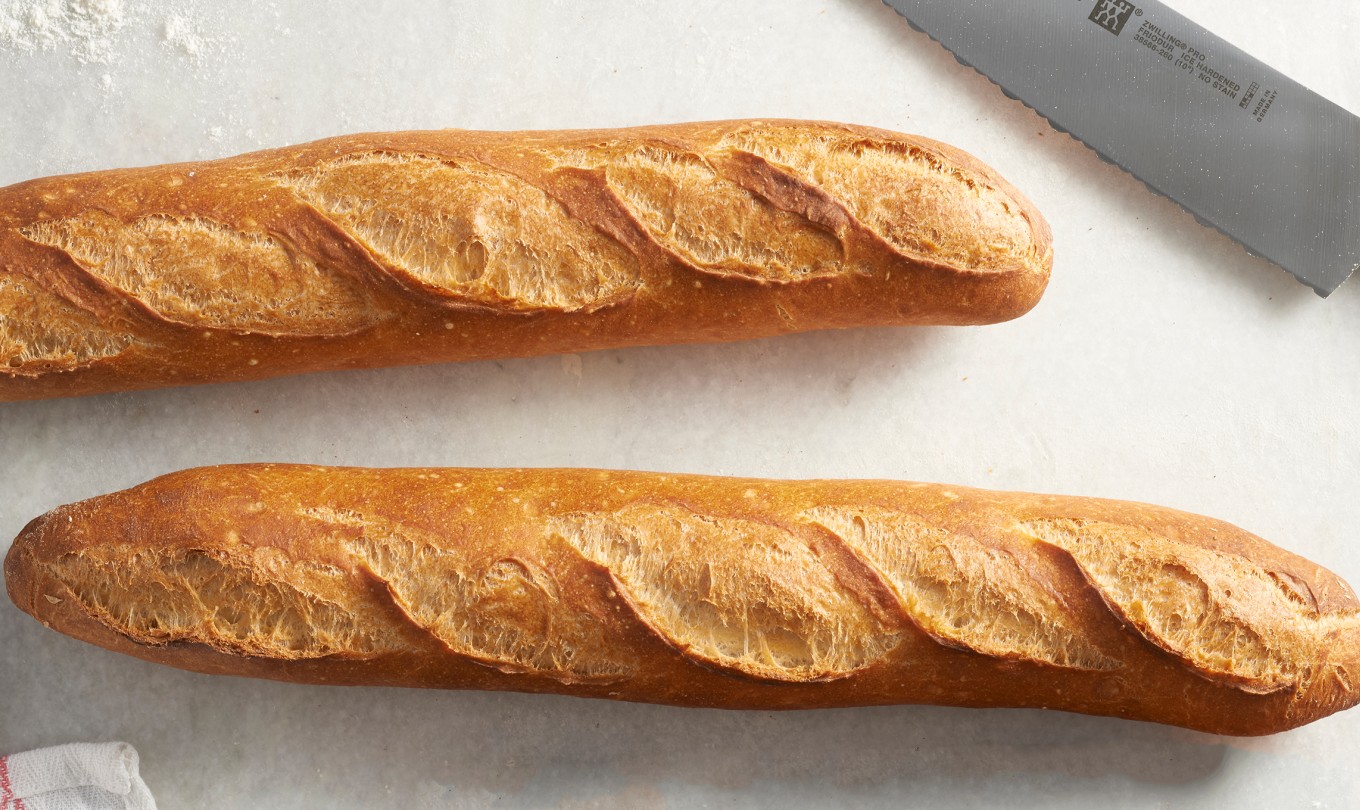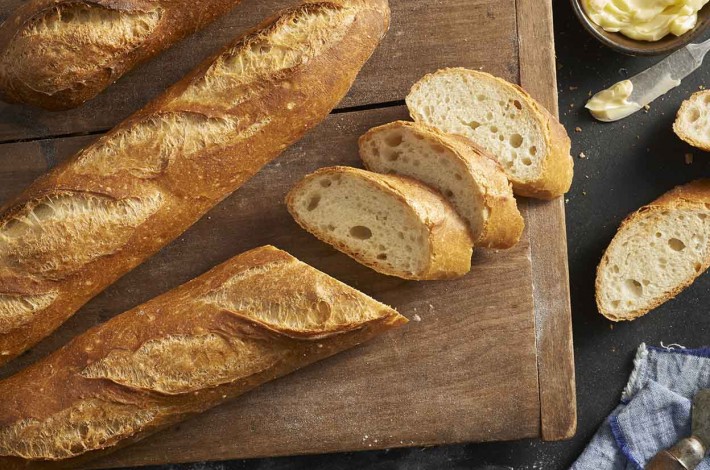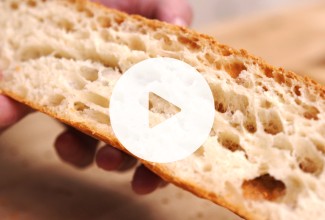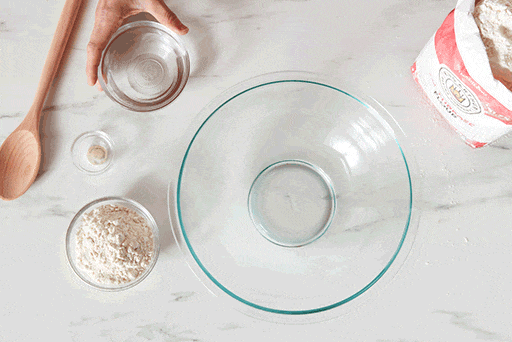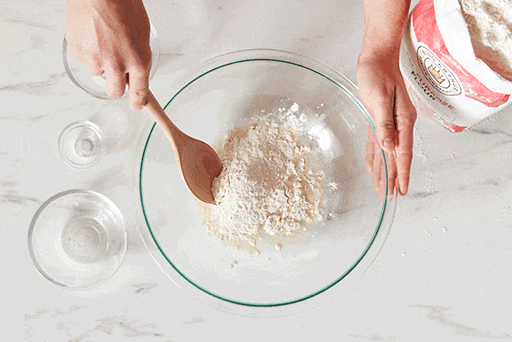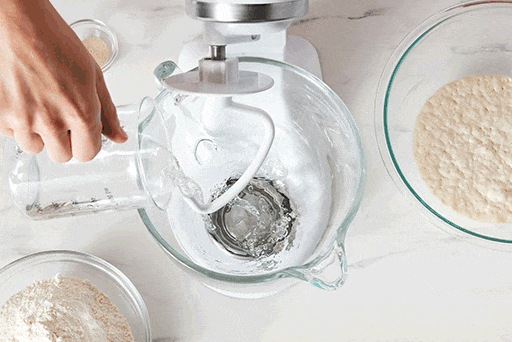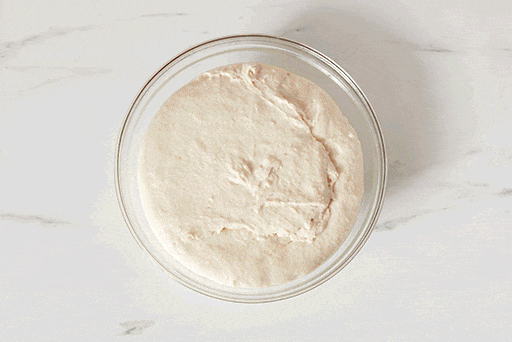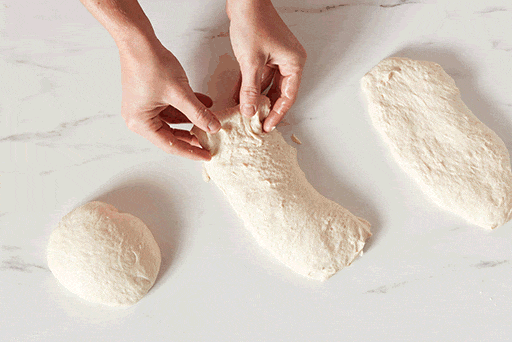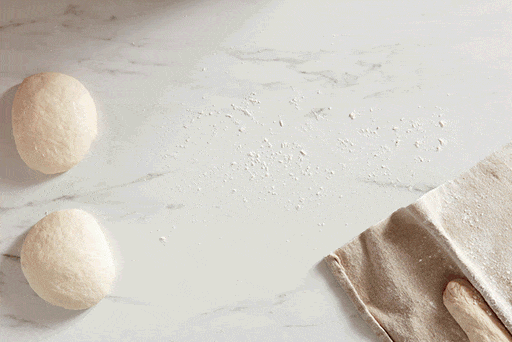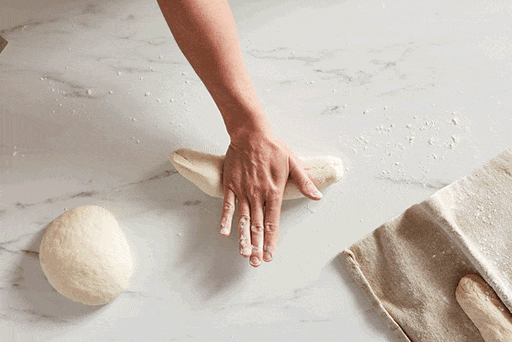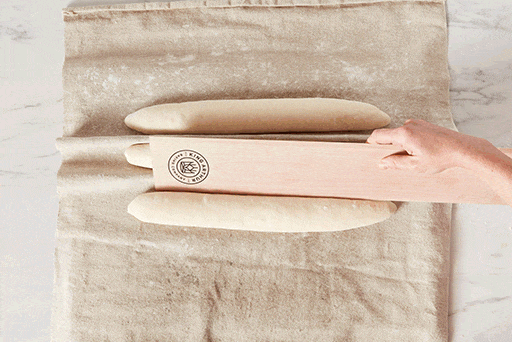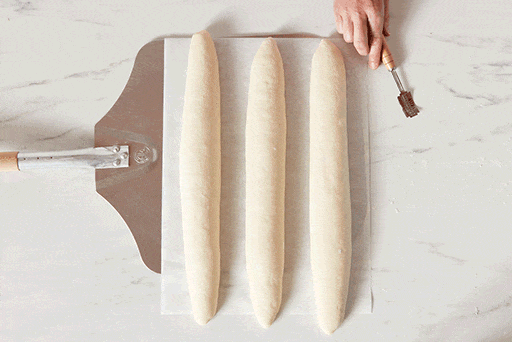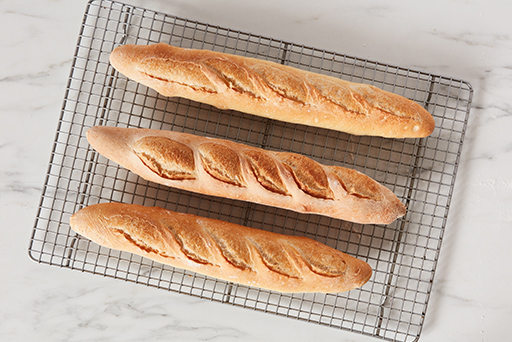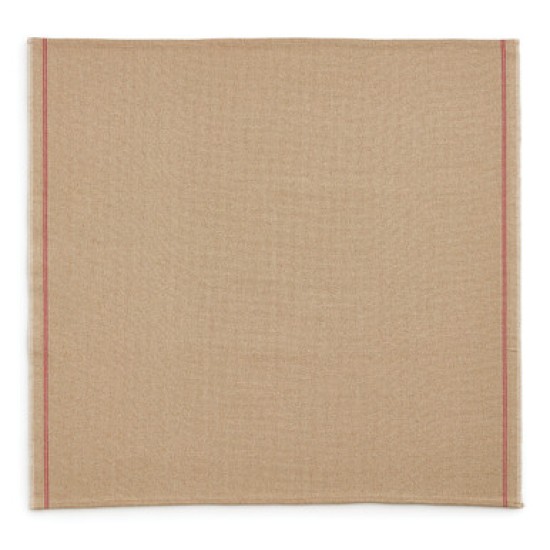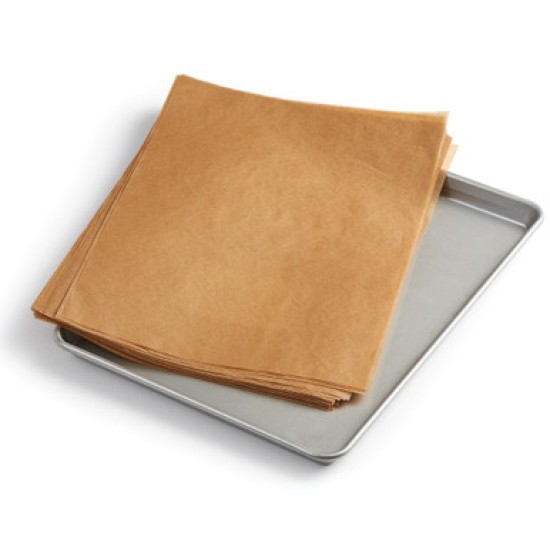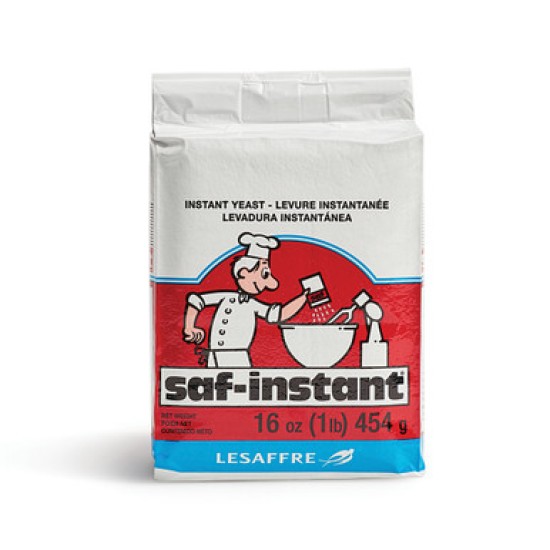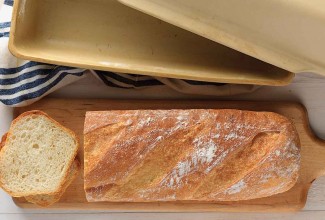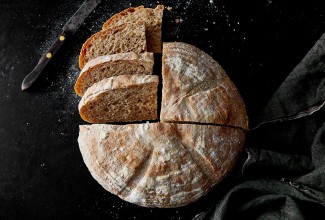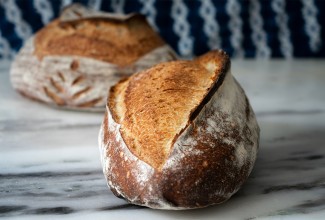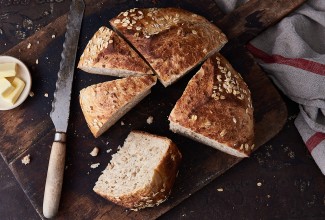-
Weigh your flour; or measure it by gently spooning it into a cup, then sweeping off any excess. In a large bowl, combine the starter ingredients.
-
To make the starter: Mix everything together to make a soft dough. Cover and let rest at room temperature for about 14 hours; overnight works well. The starter should have expanded and become bubbly.
-
To make the dough: Mix and knead everything together — by hand, mixer or bread machine set on the dough cycle — to make a soft, somewhat smooth dough; it should be cohesive, but the surface may still be a bit rough. If you're using a stand mixer, knead for about 4 minutes on medium-low speed (speed 2 on a KitchenAid); the finished dough should stick a bit at the bottom of the bowl.
-
Place the dough in a lightly greased medium-sized bowl, cover the bowl, and let the dough rest and rise for 45 minutes. Gently deflate the dough and fold its edges into the center, then turn it over in the bowl before letting it rise for an additional 45 minutes, until it's noticeably puffy.
-
Turn the dough out onto a lightly greased work surface. Gently deflate it, and divide it into three equal pieces.
-
Round each piece of dough into a rough ball by pulling the edges into the center. Cover with greased plastic wrap, and let rest for 15 minutes; or for up to 1 hour, if that works better with your schedule.
-
Working with one piece at a time, flatten the dough slightly then fold it nearly (but not quite) in half, sealing the edges with the heel of your hand.
-
Turn the dough around 180° and repeat: fold, then flatten. Repeat this whole process again; the dough should have started to elongate itself.
-
With the seam side down, cup your fingers and gently roll the dough into a 16" log. Your goal is a 15" baguette, so 16" allows for the slight shrinkage you'll see once you're done rolling. Taper each end of the log slightly to create the baguette's typical "pointy" end.
-
Place the logs seam-side down onto a lightly greased or parchment-lined sheet pan or pans; or into the folds of a heavily floured cotton dish towel (or couche). Cover them with lightly greased plastic wrap, and allow the loaves to rise until they're slightly puffy ("marshmallow-y" is the term we use in our baking school). The loaves should certainly look lighter and less dense than when you first shaped them, but won't be anywhere near doubled in bulk. This should take about 45 minutes to an hour at room temperature (about 68°F).
-
Towards the end of the rising time, preheat your oven to 450°F with a cast iron pan on the floor of the oven, or on the lowest rack. If you're using a baking stone, place it on a middle rack. Start to heat 1 1/2 cups water to boiling.
-
If your baguettes have risen in a dish towel or couche, gently roll them (seam-side up) onto a transfer peel and then roll back over onto a piece of parchment, seam-side down. If you don't have a transfer peel, roll the baguettes onto a piece of parchment (seam-side down) and then place the parchment on a baking sheet.
-
Using a baker's lame (a special curved blade) or a very sharp knife held at about a 45° angle, make three to five long lengthwise slashes in each baguette.
-
Load the baguettes into the oven. If you’re baking on a stone, use a baker’s peel to transfer the baguettes, parchment and all, onto the hot stone. Carefully pour the boiling water into the cast iron pan, and quickly shut the oven door. The billowing steam created by the boiling water will help the baguettes rise, and give them a lovely, shiny crust.
-
Bake the baguettes — on the pan, or on a stone — for 24 to 28 minutes, or until they're a very deep golden brown. Remove them from the oven and cool them on a rack. Or, for the very crispiest baguettes, turn off the oven, crack it open about 2", and allow the baguettes to cool completely in the oven, until both baguettes and oven are at room temperature.
-
Storage information: Store any leftover baguettes in a paper bag overnight; freeze for longer storage. Thaw and reheat just before serving.
